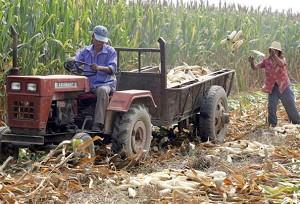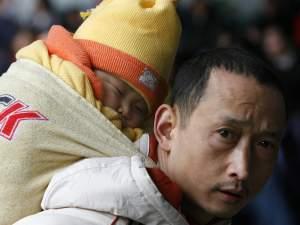CHINA—China’s state council has just issued a series of policies regarding the development of China’s future agricultural modernization. Unfortunately, analysts believe that these policies will not truly assist Chinese farmers to solve their problems in developing modernized agriculture.
Each year from 2004, the Chinese State Council has issued a No.1 Document that aims to solve the three rural problems of agriculture, farmers, and rural areas. The 2007 document is also the ninth “No.1 Document” about rural problems issued since the 1982 reform and opening.
The topic of the 2007 document is titled “Several Suggestions on Actively Developing Modernized Agriculture and Soundly Promoting the Building of a New Socialist Countryside.” It set a series of policies, such as enlarging investment in the three rural issues, expediting the construction of rural infrastructures, boosting innovations in agricultural techniques, perfecting the rural market system, training modern farmers, deepening rural reform, and reinforcing the Chinese Communist Party’s (CCP’s) leadership in the rural areas.
Saving Is Permitted but Lending Is Not
Mao Yushi, director of the Unirule Institute of Economics, believes that among the above policies the investment in the three rural issues is the most important. He said that funding is the key issue and that without it no one can talk about reeducation, technologies, and modernization in the rural areas. As a researcher who has been focusing on the study of the rural finance system for many years, Mao believes that the finance systems in both urban and rural areas are lacking in competition, and the only difference is that the financial systems in rural areas only provide savings service, not lending.
Mao said: “There are no loans in the finance services in rural areas, only deposits. All the savings in rural areas are transferred to other fields that do not include development of agriculture. The money has gone, the local talents have gone, and the laborers have gone too. It is very difficult for the farmers to lend money; it is fine to deposit, but the money will go to projects like the Three Gorges, airport construction, and the like in big cities; therefore, the capital in rural areas is becoming less and less.”
The Obstacle Blocking Development of the Countryside
A 2006 Nobel Prize winner, Yunus runs his micro-credits bank in rural areas. Mao Yushi, together with some other specialists and scholars, have also tried setting up a finance structure in a depressed Shanxi village and lending their own money to farmers, and this has had some positive effect.
Mao Yushi said Yunus has been to China to persuade the Chinese government to establish a new policy that lowers the threshold for the financial system in rural areas, but in the latest No1. Document, the CCP still insisted on the requirement that the state-run banks act as main shareholders for the rural financial system, and an independent, private rural financial system is strictly forbidden.
Mao Yushi said: “The way for solving problems of investment in the three rural issues is just in front of you, but the farmers are not allowed to act on it. It is obstructing the development in the rural area.”
Too Many Farmers
Mao Yushi pointed out that China’s fundamental problem is the large numbers in the farming population, with farmers making 60 percent of the total population but just producing 12 percent of the GDP. However, urban citizens make up 40 percent of the total population and produce 88 percent of GDP; therefore, the personal average income in urban places is 10 times higher than that in rural areas.
In America, the agricultural population is less than 2 percent. This ratio is roughly 2 percent, 3 percent, or at most 4 percent in developed countries. In China, it is 60 percent, so the fundamental way to solve China’s agriculture problems is to reduce the farming population.
Yao Jianfu, deputy head of the Agriculture Technique Economy Research Institute of China Management Academy of Sciences first identified with the idea of developing modernized agriculture brought forward by the government led by President Hu and Premier Wen, when interviewed by the Chinese staff of VOA.
Since then, Yao Jianfu has remarked that China cannot pursue the modernization of agriculture without considering the cost: “It is not a true modernization if we modernize at the cost and sacrifice of morality and ecology by following the out-dated way walked by Europe and America which has been to destroy first and then remedy afterward. In China we have sandstorms everywhere, and pollution everywhere such as water pollution, soil pollution, and air pollution. What would be the advantage to modernize that way?”
The Current System Is Caging China In
Niu Yuchang, the head of Sancun Dadi Social Science Academy, a civilian research organization engaged in the study of the three rural issues, told the VOA reporter that, what impedes the modernization of Chinese agriculture is the old system. This drawback has caused lasting poverty and poor development. He said: “China’s system is like a cage, No matter how good the policy is from the central authorities, it will be void and null after the corruption and robbery by the evil forces in the many levels of local governments. Suppose the central authorities invest 300 billion or even 800 billion yuan; the money will not go to the local rural areas without first removing those corrupted officials and organizations.”
Niu Yuchang, who is from a rural area in Heilongjiang Province, said: “The central authority issues the No.1 Document every year, but the policies promulgated only target the external problems of Chinese rural issues. The fundamental and inherent problems brought about by the political system cannot be touched at all.”



Friends Read Free